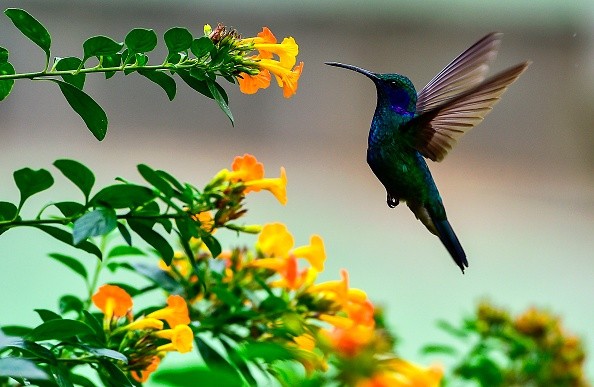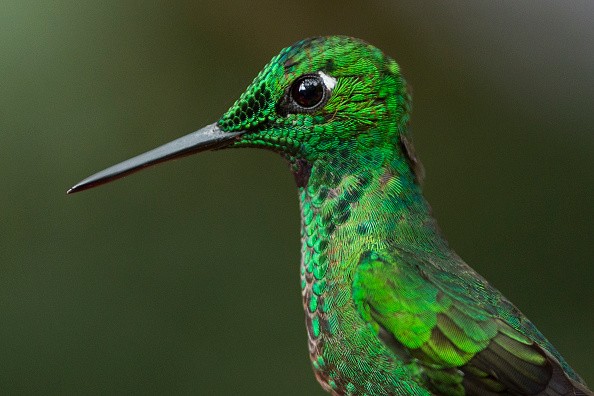Some females were discovered to have developed with bright plumage and this feature seems to protect them against aggression from the male.
They may move around appearing adorable and sociable, but aggression is common in their world. Now it appears some female hummingbirds have grown to prevent this by acquiring the bright plumage of their male species. Researchers in the US caught over 400 white-necked Jacobin hummingbirds in Panama.

Unexpectedly, they discovered that over a quarter of females possessed almost the same showy plumage - bright white tails, iridescent blue heads, and white bellies - as the males. Normally, female Jacobins are likely to be duller when compared, shaking muted green, black, or grey hues that make them mix into the environment.
Researchers conducted experiments that suggest the ostentatious male-like garb assisted the females in avoiding hostile male behaviors including pecking and body slamming while they are eating.
The Striking Resemblance
When the researchers analyzed the birds that were caught, they discovered that all the juvenile Jacobins showed ostentatious hues. Normally, across most bird species, young birds generally look like the comparable sex of mature birds.
The first author of the study, Jay Falk, is presently a postdoctoral researcher at the University of Washington but he headed the research as a part of the Cornell Lab of Ornithology and Smithsonian Tropical Research Institute.
Jay Falk said: "So, it was clear something was at play. Every female and male starts out looking like the adult male. Then as they age, about 20% of the females keep that plumage, and then 80% shift out into the drab plumage."
Generally, it is believed that ornamental, showy plumage in many species has developed, functioning as competition for mates. But in this condition, most of the females weren't keeping that colorful plumage when they become sexually mature and in search of mates, and this was a clue that the supposed sexual selection wasn't the reason, Falk noted.

Stuffed vs. Real Hummingbird
Falk and his team made efforts to give an answer to why some female Jacobins kept looking like males as adults by abandoning stuffed hummingbirds on feeders - drab females and males, male-like females - and observed as actual hummingbirds interrelate with them in various locations in Panama.
They discovered that majority of the sexual behavior by what seemed to be actual male hummingbirds was for the stuffed drab females and this boosted the notion that the sexual selection was not the appropriate clarification, as per the study released in the journal Current Biology.
Although, when they observed acts of hostility between the stuffed and actual hummingbirds, the researchers discovered that the stuffed flashy females were not usually attacked like the stuffed drab females. Falk said, "that kind of gave us an indication that it has something to do with social selection and competition for food, rather than competition for mates."
Related Article : Hummingbirds Perceive Colors That Humans Can Only Imagine
For more news, updates about hummingbirds and similar topics don't forget to follow Nature World News!
© 2025 NatureWorldNews.com All rights reserved. Do not reproduce without permission.





